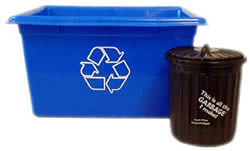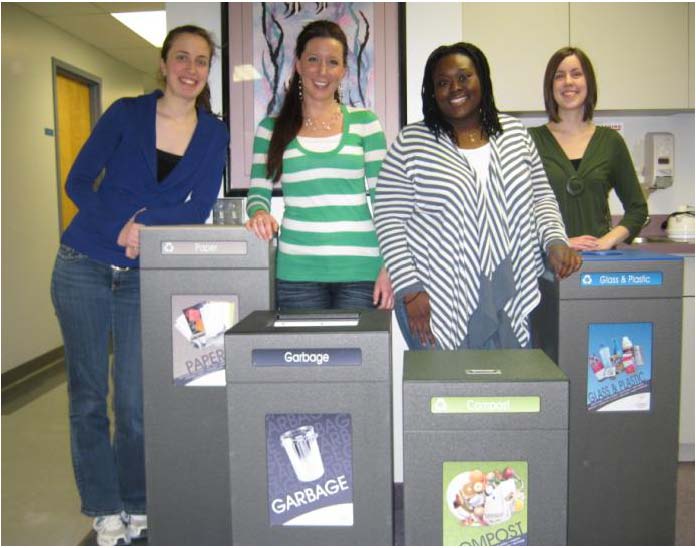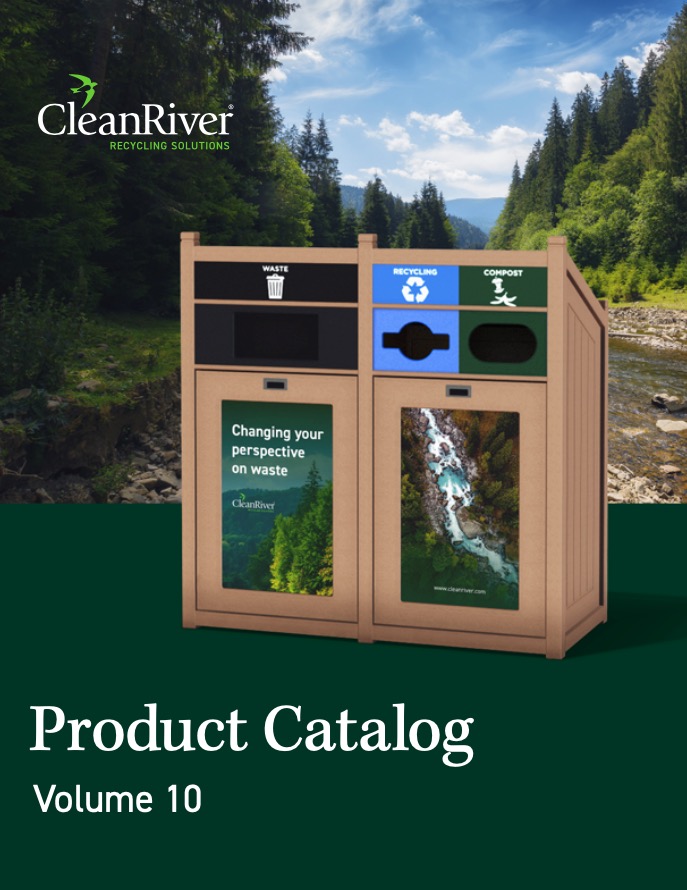Share
Many organizations such as Harley Davidson, Brewer Science and Wilfrid Laurier University, have implemented centralized recycling and waste programs.
Claire Bennett, Sustainability Manager at Wilfrid Laurier University says “The program has been instrumental in our overall waste management program at Laurier, helping us achieve a 63% waste diversion rate, which is externally audited for compliance mandates and is also calculated within our greenhouse gas emission monitoring and reduction. The program has been so successful it is now part of our design standards for ongoing builds, in addition to outfitting existing buildings.”

With centralized recycling and waste programs it becomes the employee’s responsibility to empty their desk side waste and recycling bins into waste and recycling stations that are strategically located in central traffic flow areas. CleanRiver normally recommends having the ratio of one central container per 50 employees.
There are two main benefits for adopting a centralized recycling program:
Culture and Awareness
When employees sort their own waste and recycling at the central waste stations they become more aware of what they are throwing out. As employees learn what can and can’t be recycled or composted from the graphics on the central waste stations, they choose the waste stream more wisely which results in less contamination.
Messaging on and around the containers regarding the organization’s diversion rate goals and current metrics further increase employee buy-in to the program as they see their efforts making a measurable difference to the organization.
Increased buy-in from employees results in cleaner recycling streams and higher diversion rates which can save you money on waste hauling fees as the amount of landfill trash generated reduces and the amount of recyclable waste increases. Employees tend to be more engaged in the recycling program and take personal ownership of what they are throwing out when using central location recycling.
Cost Reduction
A centralized recycling and waste program can significantly reduce facilities costs.
Example of cost reduction (based on 1000 employees):
- On average, office employees generate 2.2lbs garbage/day and work 250 days/year
- On average, custodial services cost $23/hour/person and can service approx. 350 work stations per 8 hr shift
| Current Costs | Program Changes | Savings | |
|---|---|---|---|
| Tipping Fees (1 ton generated/day @ $100/ton) | $25,000 | $25,000 | $0 |
| 15% Reduction Based on Contract Adjustment and Recycling Rebates | $0.00 | ($3,750) | $3750 |
| Under Desk Plastic Liners @ $0.04 each | $6,2403 per week | $2,0801 per week | $4,160 |
| Central Bin Liners @$0.10 each based on 20 sets of 3 streams | $1,560 | $1,560 | $0 |
| Custodial (8hr shift) | $136,6853 custodial employees emptying deskside trash & recycling and existing central containers | $45,5611 Custodial employee to empty 20 central containers | $91,124 |
| Total | $169,485/Year | $70,451/Year | $99,034/Year |
The significant savings generated by a central recycling program can either free-up custodial staff to work on other areas of the organization (cleaning work stations etc.) or can be directly used to fund other important sustainability initiatives within the organization.
A well planned and executed recycling program can generate approximately $100.00 in savings per employee per year.
Note: Hauling Fees, Custodial Costs and bin liner costs are based on national averages and may vary from region to region.



